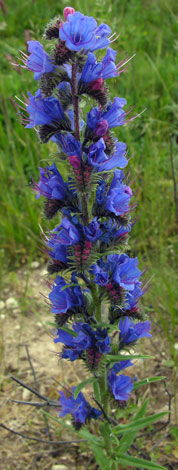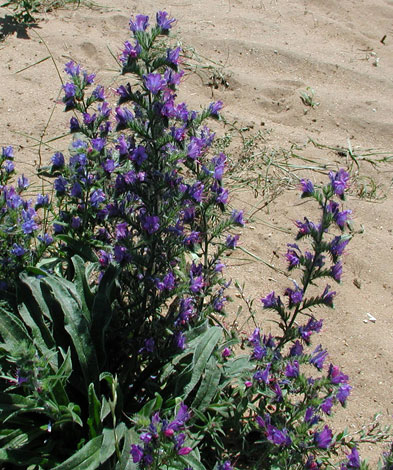Echium vulgare Viper's-bugloss CC DD N



This is commonly found in sandy areas inland as well as at the seaside in dune systems. The strange name is probably derived from two separate notions about the appearance of the plant. The seeds or nutlets are said to resemble a viper's head and it is reported that an extract of the plant was used to cure snakebite.
The bugloss part is possibly derived from middle English buglosse which was originally from two words, one meaning ox and the one meaning tongue. The French call this plant Langue de boeuf: ox tongue in English. Echium itself is derived from the Latin for viper echis. So it really has nothing to do with getting rid of any bugs resident on vipers. Pronunciation varies: some call it a bug loss others a bew gloss. In some parts of the United Sates this beautiful plant is classed as a noxious weed.
E. vulgare is common in England and Wales and in Scotland up to and including the industrial belt around the Clyde, Forth and much of Fife but from there northwards it is far less common. It is uncommon in Ireland inland but can be found on the east coast.
Brecklands, Suffolk 18th June 2005
Added on January 25th 2005, updated 24th December 2008, updated 29th March 2010







